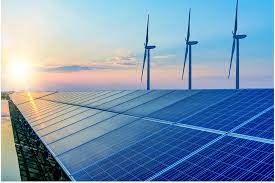
In most commercial buildings, HVAC systems run quietly in the background — until the power bill arrives. Then it’s anything but quiet. For many businesses, heating and cooling make up the biggest slice of their energy spend. The good news? You don’t need to rip out ducts or freeze your team to see real savings.
Quick answer? To reduce HVAC costs in commercial buildings, optimise temperature settings, schedule regular maintenance, seal air leaks, automate controls, and engage staff. These changes can significantly reduce retail store energy bills and overall operating expenses.
Let’s dig into what actually works — with examples, numbers, and no fluff.
Why do HVAC systems use so much energy?
Heating, ventilation and air conditioning systems are energy-hungry by design — but that doesn’t mean they have to stay that way.
Here’s why costs can blow out:
- Thermostats are set too aggressively
- Filters and ducts aren’t cleaned
- Systems run longer than necessary
- Poor insulation lets treated air escape
- Zones aren’t managed — cooling empty rooms
In commercial settings, HVAC often accounts for 40–60% of total electricity use, according to Energy.gov.au. That means even small improvements can bring noticeable savings.
What are the best thermostat settings for savings?
Start with this — it’s the easiest fix.
- Summer: 24–26°C
- Winter: 20–22°C
Every degree outside these ranges can increase energy use by 8–10%. And yes, customers and staff will adjust — especially if the space stays consistent.
One pharmacy in regional NSW installed a smart thermostat and locked the setting at 25°C. It shaved 15% off their summer bill without a single customer complaint. That’s consistency in action — a core principle of long-term behavioural change.
How can maintenance help reduce HVAC energy costs?
HVAC systems get dirty, wear down, and lose efficiency over time. Regular servicing keeps them running like they should — without chewing through excess power.
Here’s what to prioritise:
- Change filters every 1–3 months
- Inspect and clean coils (especially before summer)
- Check ducts for leaks
- Test thermostats and sensors
- Schedule biannual system servicing
A suburban Melbourne office complex discovered that a blocked intake vent was causing their rooftop unit to overwork. A $250 fix delivered over $1,000 in annual savings.
Can automation lower HVAC costs?
Absolutely. Smart HVAC controls can learn usage patterns, monitor occupancy, and adjust settings in real time.
Options include:
- Smart thermostats that pre-cool or pre-heat during off-peak hours
- Motion sensors to turn off air conditioning in unused rooms
- Zoned controls to manage different parts of the building independently
- Energy monitoring tools that show you exactly when and where HVAC is costing you most
An events venue in Perth installed room-specific zoning and cut HVAC energy use by 30% in six months. Before automation, their system cooled every room, all day — even when empty.
How much does sealing and insulation matter?
A lot more than people realise. Even the best HVAC setup loses efficiency if air leaks out of the building or if poor insulation forces it to work harder.
Focus on:
- Weather-stripping doors and windows
- Sealing ductwork
- Insulating ceilings and walls
- Installing automatic door closers
- Using window film or blinds to block direct sun
A fashion retailer in Queensland added reflective window film to their shopfront and reduced their summer cooling hours by two per day. Comfort stayed the same — costs dropped significantly.
Can staff behaviour really impact HVAC efficiency?
Yes — and it’s one of the easiest things to influence.
Encourage your team to:
- Keep doors and windows shut
- Use fans before lowering the thermostat
- Power down HVAC in unused zones
- Report unusual system behaviour
A small commercial gym ran a “Cool Smart” staff competition to reduce air con use during off-peak hours. It wasn’t just fun — it cut their energy bill by 12% in the first quarter.
Cialdini’s social proof works here — when one person models a habit, others follow.
FAQ: HVAC Savings for Business Owners
Q: What’s the easiest way to start cutting HVAC costs?
A: Set your thermostat to 24–26°C, service your system, and seal any visible air leaks.
Q: How often should I service commercial HVAC systems?
A: At least twice a year — ideally before summer and winter peak seasons.
Q: Is it worth replacing older HVAC units?
A: Yes. Newer systems with inverter technology can cut usage by 30–40% compared to models over 10 years old.
Final thought
Anyone who’s had to explain a sky-high electricity bill knows that HVAC is one of those “invisible” costs — until it isn’t. But the reality is, you have more control than you think.
By tuning your system, cleaning it, sealing up air leaks, and building better habits into your routine, you can bring HVAC costs down without freezing your staff or melting your customers.
If your building includes retail spaces, offices, or shared commercial zones, it’s also the perfect time to explore broader systems that help reduce retail store energy bills and bring down operational costs across the board.
